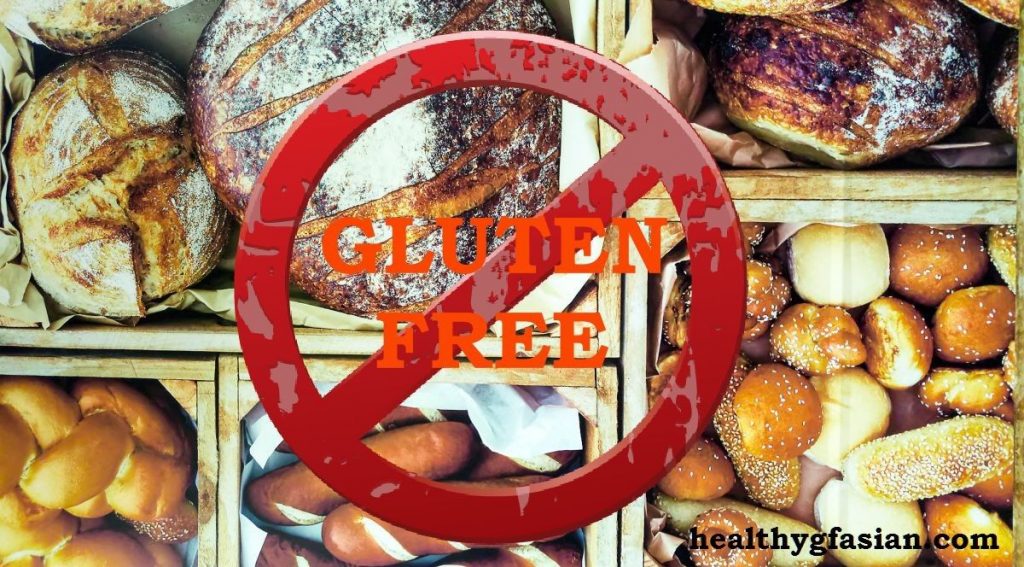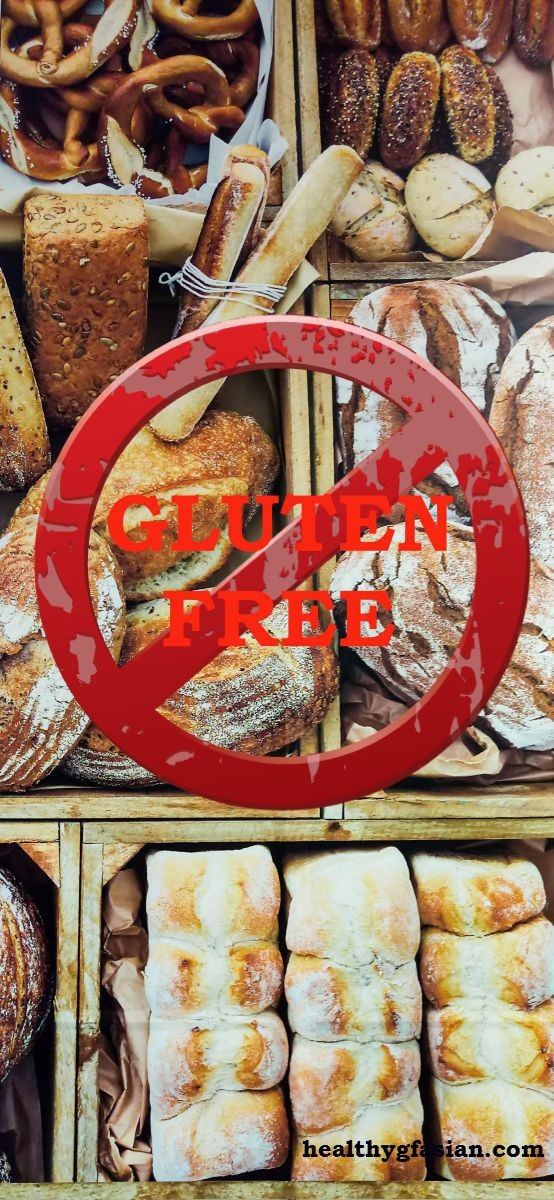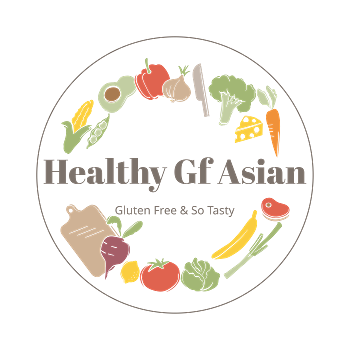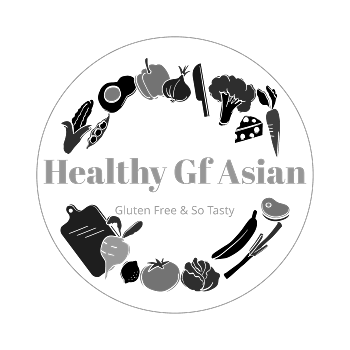
Table of contents
What is Gluten?
Obvious Sources of Gluten
When going on a gluten free diet, it includes eliminating all gluten from your diet completely. So, what is Gluten? Specifically, gluten is a combination of proteins in grains like Wheat, Barley and Rye. Including their entire genus, crossbreeds and other forms. The word gluten means “glue” in Latin language derivative. And also a mixture of storage proteins of cereal grains called prolamins and glutenins that are both insoluble in water. For wheat, the major group of gluten are prolamins namely gliadins and glutenins.
While barley prolamins are secalin namely hordein and rye prolamins. Whereas, Oats by themselves are not gluten but they contain a different type of prolamin called avenin. For those who are very sensitive to gluten, the tiny amount of avenin protein in oat can cause problems. Usually, when farmers plant oats in the same fields as wheat, cross-contamination of oat products occur. Or when processed in plants with equipment that also produce gluten grains.
Other Variations of Wheat
Other varieties of wheat include:
- Bulgar/cracked wheat;
- Wheat bran;
- Wheat gem;
- Wheat starch;
- Wholemeal wheat flour;
- Hydrolysed wheat protein;
- Pregelatinized wheat protein;
- Couscous;
- Durum;
- Einkorn;
- Emmer;
- Farina;
- Faro;
- Freekeh;
- Graham flour;
- Kamut;
- Matzo;
- Semolina; and
- Spelt.
In addition, other grains that contain gluten are: Seitan, Triticale and Mir (both are cross breeds between wheat and rye). Besides, gluten provides elasticity to dough, helping it to rise. And also retains its form giving a springy and rubbery consistency for the end product.
Common Food Containing Gluten
The most common type of foods that contain gluten are:
- Flours;
- Breakfast cereals, cereals or grains;
- Baked breads, cakes, biscuits, cookies, rusks, crackers, crispbreads, pastries, muffins and cupcakes;
- Rolls, scones, and crumpets;
- Chapatis or roti;
- Pasta and pizza;
- Ice cream cones;
- Yogurt with cereals;
- Breadcrumbs; and
- Instant noodles and other gluten based noodles.
In Asian cuisines, particularly Japanese and Chinese cuisines, “fu” is a type of traditional wheat gluten that resembles bread. Besides, they call them Yaki-Fu in Japanese. Likewise, Chinese people call them ed khaw-fu in Jiangnan dialect where they were first invented. Moreover, this type of wheat gluten is tough and rubbery and most commonly used as meat substitutes. Particularly in Asian cuisines for vegetarian, Buddhist monks and macrobiotic cuisines for Zen Buddhism. You will often find these type of “fu” sold in Asian groceries stores. Either as frozen or canned food with the word gluten displayed on the packaging and cans.
Hidden Sources of Gluten
Other than the obvious sources of gluten. Likewise, they frequently add gluten to many processed and/or prepared food. Usually hidden or in different disguises like as thickeners, emulsifiers, processing aids, fillers or ingredient ‘carriers’ and food additives.
Some examples of hidden sources of gluten are:
- Savoury pies, salami, pasties, sausages and other crumbed, battered, and stuffed products;
- Breaded or floured meat and poultry;
- Breaded ham, faggots, haggis, rissoles and scotch eggs;
- Yogurt with muesli or cereals;
- Ice cream toppings;
- Artificial creams, shredded cheese and processed cheeses;
- Sauces like oyster, fish, hoisin, pasta, tomato, Sichuan, black bean, Worcestershire and soy sauce (normally fermented with wheat);
- Chutney, mustard, mayonnaise and relish;
- Marinades and dressings;
- Waffles and croquettes;
- Fruit-pie fillings;
- Gravy mixes and soups;
- Soup stock and dried soup mixes;
- Barley malt, malt syrup and malt vinegar;
- Distilled alcohol and distilled white vinegar;
- Rice vinegar or rice wine vinegar (may have wheat or barley malt added);
- Sweet and savoury snacks and liquorice;
- Imitation crab meat;
- Potato croquettes;
- Snack bars and protein bars;
- Sweeteners;
- Seasoning/flavouring mixes;
- Blended herbs and spices, baking powders and spreads;
- Wheaten corn starch or corn flour;
- Soy bean product like tofu (may have wheat added);
- Hydrolysed vegetable protein, vegetable gum and vegetable starch.
- Dextrin, dextrose, maltodextrin, modified food starch, pre-gel starch or starch derivatives; and
- Natural and artificial flavours.
Drinks that contain gluten are: real ales, beer, lager, stout, malted drinks and vending-machine drinks.
Other Sources of Gluten
Furthermore, you can find gluten in different shapes and forms. Either in prescription medicines or over-the-counter medications, supplements, shampoos and conditioners and cosmetics. Communion bread or wafers are not gluten free. Modelling play doughs, stickers, paints and glues for children are also not gluten free. Postage stamps gum using dextrin, purchase and use self-adhesive ones instead to be on the safe side.
Cross-contamination
In addition to apparent sources of gluten. Likewise, you need to make sure that gluten containing foods do not “contaminate” gluten free foods. Besides, look out for the “May Contain” Statement on food label. For example, they manufacture gluten free foods in the same factory. Together with equipment and machinery that also manufacture wheat and other allergenic food. Including wheat, soy, milk, egg, sesame and nuts.
Some examples of cross-contamination when at home or eating out at restaurants are:
- Dishwashing sponge for washing dishes contaminated with gluten;
- Using the same fryer and oil to cook gluten food then subsequently gluten free food;
- Using the same bread machine or toaster for gluten bread and gluten free bread;
- Utilizing the same bread cutting/chopping boards or butter dishes with person eating gluten containing bread;
- Even a kiss from a loved one or a lick from your dogs or cats who have just eaten gluten;
- Using the same pizza cutter knife for gluten pizza base and subsequently gluten free pizza; and
- Unwrapped gluten free cakes purchased from cake shops that also sell gluten cakes. With the same kitchen producing both gluten and gluten free cakes.

Gluten Free Diet
Why Go Gluten Free?
Celiac Disease
Celiac or coeliac disease is an autoimmune disease and a particular kind of food intolerance or simply called gluten intolerance. Likewise, it is the foremost medical condition whereby sufferers need to adhere to a strict gluten free diet. Besides, gluten triggers an immune respond in celiac disease sufferers. Causing the body to battle even the tiniest amount of gluten. And in the process causing damage to the lining of the small intestine i.e. the “villi” – finger-like projections. These “villi” are crucial for absorption of nutrients and fluids from food and drinks consumed. Thereby, causing conditions like anaemia, weak teeth and bones from malnutrition and low calcium as well as digestive problems.
Celiac disease is a genetic disease and normally inherited. It can start at any age even for someone who has eaten gluten previously with no problems. Other than genetic predisposition and consumption of gluten. Environmental trigger like a traumatic event, for example a car accident, or pregnancy or a viral infection. Likewise, widespread distribution of increasingly more “toxic” grains and much quicker proving phase for bread dough, may initiate celiac disease. Moreover, the only known lifelong treatment for people with celiac disease is to eliminate gluten completely from the diet .
However, a small number of celiac disease patients do not respond to a strict gluten free diet. They still feel really unwell even after going on a strict gluten free diet. They called this “unresponsive” celiac disease and require medication in addition to a gluten free diet.
Prevalence of Celiac Disease Globally
Recent studies have shown that in Western countries, up to 1% of the population may have celiac disease. Predominantly in people with European descent. Likewise, with incidence of celiac disease varying between 1 in 100 persons to 1 in 500 persons. With as many as 80% remained undiagnosed especially those with vague or silent symptoms. It now also emerges that celiac disease is more common in Africa, South America and Asia than formerly thought.
Diagnosis of Celiac Disease
Diagnosis of celiac disease is two folds: Firstly, serologic blood tests screening for celiac disease antibodies called tTG-IgA test. In order for this test to be accurate. You must consume gluten for a minimum of six weeks before taking the test. Secondly, if blood test results is positive. A gastroenterologist need to perform a biopsy of the small intestine. In order to check for damage and to confirm diagnosis of celiac disease.
Another gene test available that do not require consumption of gluten. Is the presence of either or both of genes HLA DQ2 and/or DQ8. As shown in majority of celiac disease sufferers. But the gastroenterologist will still need to do a biopsy of the small intestine. To look for damage for confirmation of celiac disease.
Dermatitis Herpetiformis
Dermatitis Herpetiformis (DH), or Duhring’s disease, is a rare chronic genetic skin condition of red and intensely itchy blisters. Primarily on elbows, forearms, knees and buttocks even though it can involve any skin area. Some DH sufferers also have mild form of celiac disease. Moreover, the only treatment for DH is a strict lifelong gluten free diet similar to celiac disease. Besides, even a very tiny trace amount of gluten can flare up the skin rashes again. And/or prevent them from healing.
Non-Celiac Gluten Sensitivity (NCGS)
There are some people who suffer from the same symptoms as celiac disease sufferers but have no intestinal damage. Likewise, they call this condition non-celiac gluten sensitivity (NCGS). Or non-celiac wheat sensitivity (NCWS), whereby symptoms settle through strict gluten free diet.
Food Intolerance
Many people often confuse food intolerance with food allergies. Likewise, gluten intolerance or wheat intolerance are food intolerance. Some other examples of food intolerance are lactose intolerance. Besides, a lack of the enzyme called lactase and are very common in the Asian population. In many instances, celiac disease sufferers also have lactose intolerance. And they feel better on a lactose or even dairy free diet in addition to going gluten free. In addition, other food ingredients added or chemicals in food can cause symptoms. For instance tyramine in red wine and matured cheese can possibly cause flushing and or migraine. As well as the preservative called sulphur dioxide added to food, commonly to grapes, may exacerbate asthma.
Leaky Gut Syndrome
Other causes of food intolerance particularly wheat intolerance is higher circulating levels of markers of intestinal damage. Called “Leaky Gut Syndrome”. As well as improper immune system stimulation. Besides, the offenders are Amylase Trypsin Inhibitors (ATIs), proteins found in wheat. Causing the lining of the bowel to become leaky, permitting these proteins to permeate the gut wall. And enter the blood stream as well as travel to other organs and initiate immunological reactions.
ATIs aggravate the following autoimmune diseases including:
- Multiple sclerosis (MS);
- Lupus;
- Sjogren’s (Sicca) syndrome;
- Rheumatoid arthritis;
- Asthma;
- Crohn’s disease;
- Autoimmune thyroiditis or Hashimoto’s disease (hypothyroidism); and
- fibromyalgia.
As well as other conditions like Eczema, Non-Alcoholic Fatty Liver Disease, Irritable Bowel Syndrome (IBS) and Chronic Fatigue Syndrome.
Disturbance in the natural balance of beneficial bacteria in the bowel may also contribute to these types of food intolerance. Moreover, it is important to identify food intolerance like gluten and wheat intolerance and removing them from your diet. By substituting with other food can be the most effective treatment.
Symptoms of Celiac Disease, Non-celiac Gluten Sensitivy (NCGS) or Gluten Intolerance
Symptoms connected to celiac disease and NCGS or gluten intolerance are:
- Stomach bloating, pain and cramping;
- Diarrhoea and/or constipation;
- Unexplained fatigue or chronic fatigue;
- Headaches and migraine;
- Mouth ulcers and sore tongue,
- Skin problems like psoriasis and eczema;
- Joint pains;
- Hair loss;
- Vomiting, nausea and loss of appetite;
- Malnutrition;
- Infertility and repeated miscarriage;
- “Foggy mind” and depression and anxiety.
- Aggravated behavioural problems like attention deficit hyperactivity disorder (ADHD) and autism in children.
Food Allergy
Others with wheat allergy also respond badly to the proteins found in wheat. They need to choose to have a wheat free diet or a gluten free diet. Food allergy occurs when we inhale or eat allergens producing too much antibodies known as immunoglobulin E (IgE). They name this medical condition as “atopic” and is usually genetic.
Common food allergens include: eggs, milk, wheat, soy, corn, tree nuts, peanuts, shellfish, fish, and sesame. As well as medications, sulphites, pollens, dust or animal fur. Plus yeast, strawberries, tomato, nightshades and even rice. Atopic people have immediate or delayed allergic reactions. For example rashes, swelling of face, runny nose, wheezing, flushing and even life-threatening cases of anaphylaxis.
Gluten Free Food
Going gluten free may seem like a disheartening mission at first. Because it just seems like gluten is everywhere, added to almost all processed and prepared food. But nowadays, they produce many specially produced gluten free convenience food and products made from gluten free ingredients. Likewise, these gluten free products include butter, cakes, bread, biscuits, cookies, flour mixes, pasta, cereals and pizza base. Manufacturers also make all kinds of gluten free sauces and dressings particularly for people on a gluten free diet.
These gluten free sauces and dressings include:
- Gluten free soy sauce;
- Hot sauces;
- Tomato sauce and paste;
- Salad dressings;
- Mustard;
- Worcestershire sauce and
- Asian sauces (Refer to my Guide to Stocking a Gluten Free Lactose Free Asian Pantry).
Furthermore, you can easily find a range of safe gluten free food. In health food and gluten free aisles of supermarkets, health food stores and even online specialty stores.
Balanced Diet after Diagnosis of Celiac Disease and Gluten Intolerance
The diagnosis of celiac disease and gluten intolerance does not mean the end of healthy and delicious food. Likewise, having a balanced diet is vital for everyone and including people who are on gluten free diets. Besides, this is to improve nutrient absorption and lower risks of any potential health problem. In order to make sure that your chosen processed or packaged foods are gluten free. Moreover, read all food labels and ingredients cautiously, looking out for “May Contain” Statements. When eating out, it is important to verify that foods are gluten free. Refer to official gluten free food and restaurant directories. As well as endorsed products list from your national celiac societies or support groups.
Naturally Gluten Free Food
Majority of our essential foods are naturally gluten free. For instance poultry, red meat, fish, seafood, eggs, fruits and fresh or frozen vegetables. In addition, dairy and soya bean products like soy milk and tofu are also naturally gluten free. Plus plain nuts and seeds.
Gluten Free Grains/Flours
There are many gluten free grains including:
- All rice including white rice, black rice, basmati rice (brown and white), brown rice, and jasmine rice. Plus wild rice, glutinous rice (white and black);
- Sorghum;
- Millet;
- Quinoa;
- Amaranth;
- Corn or maize (preferably non-gmo);
- Teff;
- Rice bran;
- Sago and tapioca;
- Arrowroot;
- Polenta;
- Indian rice grass (Montina);
- Buckwheat (despite wheat in its name);
- Potato and Sweet Potato;
- Gluten free couscous made from brown rice and gluten free oats (as specified on food label).
In addition, gluten free flours include:
- Rice, glutinous rice (white and black) flour;
- Tapioca flour/starch;
- Arrowroot,
- Potato flour/starch;
- Coconut flour;
- Cauliflower flour;
- Banana flour;
- Mung bean (green bean) flour/starch;
- Chestnut flour;
- Corn or maize flour/starch;
- Buckwheat flour;
- flaxseed flour;
- Chick pea (Channa) flour;
- Sorghum flour;
- Soya flour;
- flaxseed flour;
- Besan/gram flour;
- Almond flour;
- Hazelnut flour; and
- Gluten free flour mixes. Including gluten free all-purpose flour, gluten free self-raising flour, gluten free bread and pizza flour mixes. Plus gluten free pancake flour mixes.
Other Gluten Free Products
Gluten free derivatives, sauces, seasonings, sweeteners, Tamari soy sauce and all other gluten free sauces. Refer to my Guide to Stocking a Gluten Free Lactose Free Asian Pantry.
Gluten Free seasonings include:
- Pure salt;
- Pepper;
- Individual herbs;
- Blend of individual herbs;
- Stevia, honey, agave syrup, pure maple syrup, brown rice syrup and corn syrup;
- Vinegar (refer balsamic vinegar* note below);
- Baking soda and baking powder;
- Cream of tartar;
- Curry powder;
- Yeast;
- Essences;
- Molasses;
- Nut butters;
- Dextrose/dextrin;
- Glucose/glucose syrup;
- Psyllium husks;
- Agar-agar powder;
- Guar gum and xantham gum**;
- Locust bean gum; and
- Monosodium glutamate (MSG).
Gluten free drinks include alcohol like: wine, champagnes, sherries, spirits (including malt whisky), liqueurs, ports, vermouths. As well as ciders, perries, gin, brandy, rum, tequila and gluten free beer. Other gluten free drinks are: tea, pure coffee, cocoa, rice milk, soy milk, fizzy drinks, juices and soft drinks.
*For Balsamic Vinegar, they make it with grapes but aged it in barrels built with wood. Likewise, they use wheat or rye flour paste to seal those barrels. This could result in cross contamination of the balsamic vinegar. But this could only affect people who are highly sensitive to trace gluten. If not, balsamic vinegar should be safe for those on a gluten free diet.
**Xanthan Gum is gluten free and turns stretchy when wet. They normally add it to make gluten free bread, cakes and pastries softer and less crumbly.
Support Groups
for celiac (coeliac) disease and dermatitis herpetiformis (DH):
AUSTRALIA
NEW ZEALAND
UNITED STATES
CANADA
UNITED KINGDOM
SINGAPORE
https://www.internationalglutenfree.com/
Celiac Associations Around The World




i was diagnosed with type 2 diabetes in Dec. put on a pill and counting carbs. salads hurt my gut, so any things i cannot identify hurt me causing diarrhea, weakness and just feeling bad. Is gluten free ok for diabetics? I need to feel better for sure
People with diabetes are generally encouraged to follow a healthy balanced diet. I would strongly recommended that you seek the guidance of a qualified dietitian who also specialises in the management of diabetes.
Low fodmap diet for diabetes include eating low GI starchy carbohydrates. Avoiding carbohydrates with high GI like potato and oat and wheat based bread. Essentially means avoiding gluten bread. Choosing low GI carbohydrates like sweet potato and basmati rice, avoiding sudden spike in blood sugar levels. Processed gluten free products often can contain hidden high sugar content as well. Do your own gluten free baking and opt for naturally gluten free food like meat, seafood, low fodmap fruits and vegetables.
If you find that you can’t tolerate certain food like salad, it may be helpful to do elimination diet with the help of a dietitian to rule out any food sensitivity and food intolerance or even food allergies. Also, you may want to check for Celiac disease by talking to your GP or gastroentrologist for diagnosis. Hope this is helpful for you and that you will be on the road to feeling better soon. 🙂